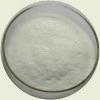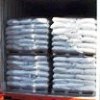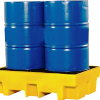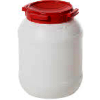Magnesium trisilicate Commercial Pure n BP Ph Eur USP FCC Food Grade Manufacturers Suppliers, India
Anmol Chemicals are manufacturers of Specialty Chemicals and Pharmaceutical Excipients, in India. Anmol Chemicals Group has manufacturing facilities spread across India, representatives in Houston Chicago USA and toll manufacturers in China. We make IP, BP, USP, Ph Eur, FCC or Food Grade, ACS, AR or Analytical Reagent Grade, LR or Laboratory Reagent Grade and Pure Grades of various chemicals. All our items are analyzed to meet the required standards.
Our manufacturing facility is FDA GMP approved and ISO-9001, ISO 14000, OHSAS 18000, ISO 22000, FSSAI HACCP certified. We are offering products manufactured as per Kosher and Halal approved method. We are registered with "Reach" for export to European countries.
CAS No.: 14987-04-3 anhydrous & 39365-87-2 for hydrate, EC Code EINECS: 239-076-7, Molecular Weight: 260.86, Chemical Formula: Mg2O8Si3

Magnesium trisilicate is an inorganic compound that is used as a food additive. The additive is often employed by fast food chains to absorb fatty acids and remove impurities that form in edible oils during the frying process.
Magnesium Trisilicate USP Grade
2MgO3SiO2xH2O -- (anhydrous) 260.86
Silicic acid (H4Si3O8), magnesium salt (1:2), hydrate.
Magnesium silicate hydrate (Mg2Si3O8xH2O) [CAS 39365-87-2].
Anhydrous [CAS 14987-04-3].
Magnesium Trisilicate is a compound of Magnesium Oxide and silicon dioxide with varying proportions of water. It contains not less than 20.0 percent of magnesium oxide (MgO) and not less than 45.0 percent of silicon dioxide (SiO2).
Identification:
A: Mix about 500 mg with 10 mL of 3 N hydrochloric acid, filter, and neutralize the filtrate to litmus paper with 6 N ammonium hydroxide: the neutralized filtrate responds to the tests for Magnesium.
B: Prepare a bead by fusing a few crystals of sodium ammonium phosphate on a platinum loop in the flame of a Bunsen burner. Place the hot, transparent bead in contact with Magnesium Trisilicate, and again fuse: silica floats about in the bead, producing, upon cooling, an opaque bead with a web-like structure.
Water: Weigh accurately about 1 g in a tared platinum crucible provided with a cover. Gradually apply heat to the crucible at first, then strongly ignite to constant weight: it loses between 17.0% and 34.0% of its weight.
Soluble salts: Boil 10.0 g with 150 mL of water for 15 minutes. Cool to room temperature, allow the mixture to stand for 15 minutes, filter with the aid of suction, transfer the filtrate to a 200-mL volumetric flask, dilute with water to volume, and mix. Evaporate 50.0 mL of this solution, representing 2.5 g of the Trisilicate, in a tared platinum dish to dryness, and ignite gently to constant weight: the weight of the residue does not exceed 38.0 mg (1.5%).
Chloride: A 20-mL portion of the diluted filtrate prepared in the test for Soluble salts, representing 1 g of Magnesium Trisilicate, shows no more chloride than corresponds to 0.75 mL of 0.020 N hydrochloric acid (0.055%).
Sulfate: Treat the residue obtained in the test for Soluble salts with 2 mL of hydrofluoric acid, and evaporate on a steam bath to dryness. Mix the residue with water, transfer to a filter, and wash, using approximately 50 mL of water for the complete procedure. Heat the filtrate to boiling, and add 0.1 mL of hydrochloric acid and 5 mL of barium chloride TS. Maintain the mixture near its boiling point for 1 hour, filter, wash the precipitate thoroughly with water, dry, and ignite to constant weight: the weight of the residue does not exceed 30 mg (0.5%).
Free alkali: Add 2 drops of phenolphthalein TS to 20 mL of the diluted filtrate prepared in the test for Soluble salts, representing 1 g of the Trisilicate: if a pink color is produced, not more than 1.0 mL of 0.10 N hydrochloric acid is required to discharge it.
Arsenic: 8 ppm.
Heavy metals: the limit is 0.003%.
Acid-consuming capacity: Weigh accurately about 200 mg into a glass-stoppered, 125-mL conical flask. Add 30.0 mL of 0.1 N hydrochloric acid VS and 20.0 mL of water. Place the flask in a bath maintained at 37 , and shake the mixture occasionally during a period of 4 hours but leave the mixture undisturbed during the last 15 minutes of the heating period. Cool to room temperature. To 25.0 mL of the supernatant add methyl red TS, and titrate the excess acid with 0.1 N sodium hydroxide VS. One g of Magnesium Trisilicate, calculated on the anhydrous basis, consumes not less than 140 mL and not more than 160 mL of 0.10 N hydrochloric acid.
Ratio of SiO2 to MgO: between 2.10 and 2.37.
Magnesium Silicate FCC Food Grade
Synthetic Magnesium Silicate
INS: 553(i) CAS: [1343-88-0]
DESCRIPTION
Magnesium Silicate occurs as a very fine, white powder free from grittiness. It is a synthetic, usually amorphous form of magnesium silicate in which the molar ratio of magnesium oxide (MgO) to silicon dioxide (SiO2) is approximately 2:5. It is insoluble in water and in alcohol, but is readily decomposed by mineral acids. The pH of a 1:10 slurry is between 7.0 and 10.8.
Function: Anti-caking agent; filter aid.
REQUIREMENTS
Identification:
A. Mix about 500 mg of sample with 10 mL of 2.7 N hydrochloric acid, filter, and neutralize the filtrate to litmus paper with 6 N ammonium hydroxide. The neutralized filtrate gives positive tests for Magnesium.
B. Prepare a bead by fusing a few crystals of sodium ammonium phosphate on a platinum loop in the flame of a Bunsen burner. Place the hot, transparent bead in contact with a sample, and again fuse. Silica floats about in the bead, producing, upon cooling, an opaque bead with a web-like structure.
Assay: Not less than 15.0% of MgO and not less than 67.0% of SiO2, calculated on the ignited basis.
Fluoride: Not more than 10 mg/kg.
Free Alkali (as NaOH): Not more than 1%.
Lead: Not more than 5 mg/kg.
Loss on Drying and Loss on Ignition: Not more than the percentage stated or within the range claimed by the vendor.
Soluble Salts: Not more than 3.0%.
Magnesium Trisilicate BP Ph Eur Grade
DEFINITION
It has a variable composition corresponding approximately to Mg2Si3O8,xH2O.
Content:
— magnesium oxide: minimum 29.0 per cent (ignited substance),
— silicon dioxide: minimum 65.0 per cent (ignited substance).
CHARACTERS
Appearance: White or almost white powder.
Solubility: Practically insoluble in water and in ethanol (96 per cent).
IDENTIFICATION
A. 10.25 g gives the reaction of silicates.
B. 1 ml of solution S (see Tests) neutralized with dilute sodium hydroxide solution gives the reaction of magnesium.
TESTS
Solution S: To 2.0 g add a mixture of 4 ml of nitric acid and 4 ml of distilled water. Heat to boiling with frequent shaking. Add 12 ml of distilled water and allow to cool. Filter or centrifuge to obtain a clear solution and dilute to 20 ml with distilled water.
Alkalinity: To 10.0 g in a 200 ml conical flask, add 100.0 g of water and heat on a water-bath for 30 min. Allow to cool and make up to the initial mass with water R. Allow to stand and filter or centrifuge until a clear liquid is obtained. To 10 ml of this liquid add 0.1 ml of phenolphthalein solution. Not more than 1.0 ml of 0.1 M hydrochloric acid is required to change the colour of the indicator.
Water-soluble salts: Maximum 1.5 per cent. In a platinum dish, evaporate to dryness on a water-bath 20.0 ml of the liquid obtained in the test for alkalinity. The residue, ignited to constant mass at 900 ± 50 °C, weighs a maximum of 30 mg.
Chlorides: Maximum 500 ppm.
Sulphates: Maximum 0.5 per cent.
Arsenic: Maximum 4 ppm, determined on 2.5 ml of solution S.
Heavy metals: Maximum 40 ppm.
Loss on ignition: 17 per cent to 34 per cent, determined on 0.5 g by ignition to constant mass at 900 ± 50 C in a platinum crucible.
Acid-absorbing capacity: Suspend 0.25 g in 0.1 M hydrochloric acid , dilute to 100.0 ml with the same acid and allow to stand for 2 h in a water-bath at 37 ± 0.5 °C, with frequent shaking. Allow to cool. To 20.0 ml of the supernatant solution add 0.1 ml of bromophenol blue solution and titrate with 0.1 M sodium hydroxide until a blue colour is obtained. The acid-absorbing capacity is not less than 100.0 ml of 0.1 M hydrochloric acid per gram.
Manufacturers
ANMOL CHEMICALS
S-8, SARIFA MANSION, 2ND PRINCIPAL SHAIKH HASAN MARG, MUMBAI 400009, INDIA
TEL: (OFF) 91-22-23726950, 23774610, 23723564. FAX: 91-22-23728264
e-mail: info@anmol.org
Copyright and Usual Disclaimer is Applicable
Exporters to USA, UAE, Europe, South Africa, Tanzania, Kenya, Egypt, Turkey, Nigeria, Uganda, Brazil, Chile, Argentina, Dubai etc.
Representatives in New York, Houston - Texas, Chicago - Illinois, Los Angeles.
Fast Selling IP BP USP ACS FCC Food Grades of Chemicals by Anmol Chemicals
Aluminium Magnesium Silicate or Magnesium Aluminum Silicate
Aluminum Chlorohydrate ----- Dihydroxyaluminum Sodium Carbonate
Aluminum Chloride ---------- Ammonium Sulfate ----- Ammonium Persulfate
Aluminum Potassium Sulfate - Ammonium Chloride ---- Ammonium Bicarbonate
Ammonium Carbonate --------- Benzyl Alcohol ------- Boric Acid
Benzoic Acid --------------- Borax; Sodium Borate - Benzoyl Peroxide
Calcium Chloride
Calcium Hydroxide ---------- Calcium Acetate ------ Calcium Butyrate
Calcium Lactobionate ------- Calcium Levulinate --- Calcium Saccharate
Carbamide Peroxide --------- Citric Acid ---------- Calcium Phosphate
Calcium Oxide -------------- Calcium Sulfate ------ Chromic Chloride
Cupric Chloride ------------ Ferric Chloride ------ Ferric Nitrate -------
Formaldehyde Solution ------ Fumaric Acid
Gentian Violet ------------- Glacial Acetic Acid
Lactobionic Acid ----------- Magnesium Butyrate
Magnesium Oxide ------------ Magnesium Chloride --- Magnesium Sulfate
Malic Acid ----------------- Maleic Acid ---------- Manganese Chloride
Manganese Sulfate ---------- Methylene Blue ------- Magnesium Trisilicate
Oleic Acid ----------------- Octyldodecanol ------- Phenylethyl Alcohol
Potassium Acetate ---- Potassium Carbonate -------- Potassium Hydroxide
Potassium Chloride --- Potassium Phosphate -------- Potassium Bitartrate
Propylene Carbonate -- Propyl Gallate ------------- Propionic Acid
Selenious acid
Sodium Molybdate ----------- Sodium Perborate ----- Sodium Phosphate
Sodium Propionate ---------- Sodium Acetate ------- Sodium Bicarbonate
Sodium Hydroxide ----------- Sodium Chloride ------ Sodium Thiosulfate
Sodium Selenite ------------ Taurine -------------- Urea
Vanadyl Sulfate ------------ Zinc Chloride -------- Zinc carbonate, Zinc oxide, Zinc peroxide
Zinc Sulfate
Other Best Selling Products
Ammonium Bromide ----------- Ammonium Phosphate --- Barium Chloride
Butylated Hydroxyanisole --- Butylated Hydroxytoluene
Calcium Nitrate Nitrite ---- Calcium Propionate --- Copper Sulfate
Ceric Ammonium Nitrate ----- Cinnamaldehyde ------- Isatoic Anhydride
Directly Compressible Calcium Carbonate ----------- Encapsulated Citric Acid
Encapsulated Fumaric Acid -- Encapsulated Sodium Bicarbonate -
Encapsulated Sorbic Acid
Potassium Bromide ---------- Potassium Iodide ----- Potassium Monopersulfate
Potassium Nitrate Nitrite
Sodium Bromate ------------- Skatole -------------- Sodium Butyrate
Sodium Nitrite & Nitrate --- Sodium Bromide ------- Sodium Diacetate
Sodium Formaldehyde Bisulfite Strontium Chloride -- Stannous Chloride
TBHQ Tertiary Butylhydroquinone
Magnesium Trisilicate
Commercial Pure & USP BP Ph Eur FCC Food Grade












